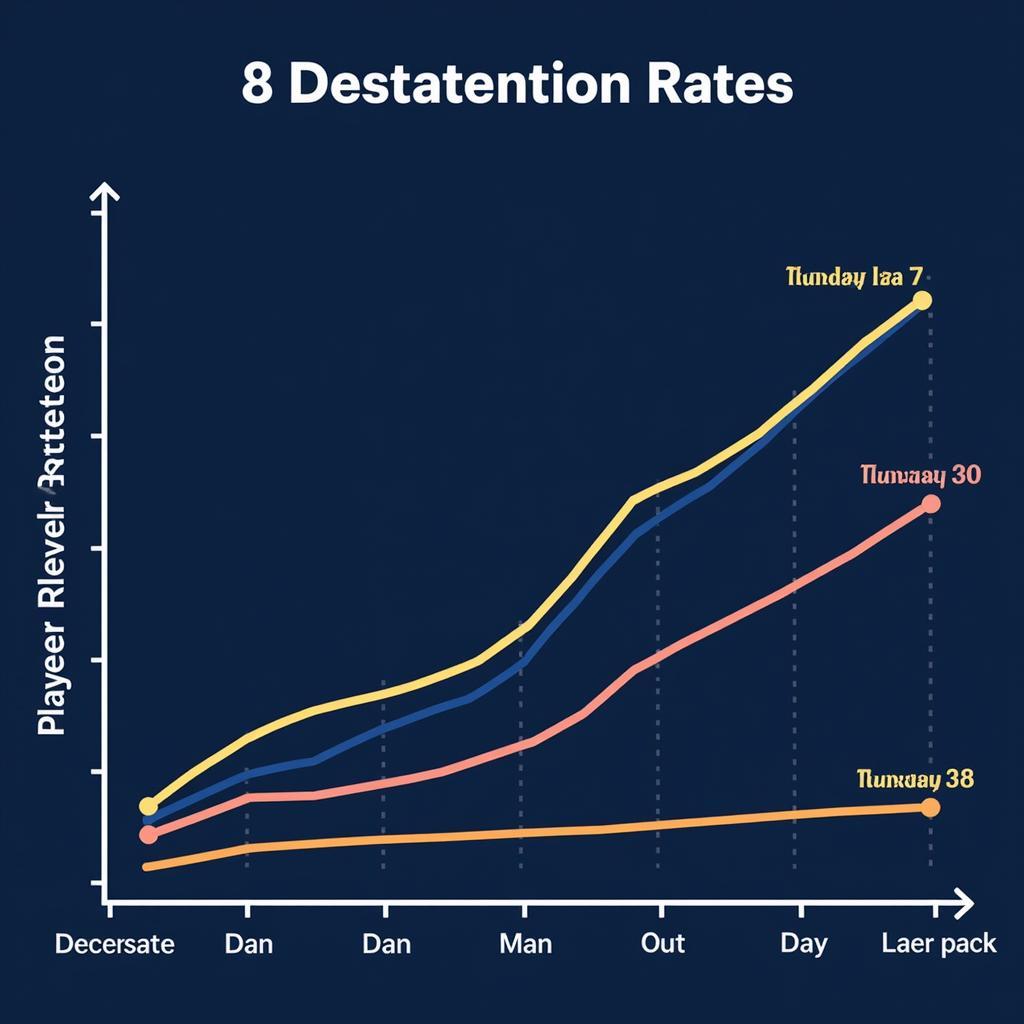Player retention is the lifeblood of any successful game. While dazzling graphics and engaging gameplay grab headlines, the less-discussed figure of player retention often holds the key to a game’s long-term success. It’s the silent metric that whispers volumes about a game’s health, indicating whether players are truly captivated or merely passing through.
Why Player Retention is the Unsung Hero of Gaming
Retention rates provide a crucial window into player satisfaction and engagement. A high retention rate signals a thriving community, consistent revenue streams, and a strong foundation for future growth. Conversely, a low retention rate can be a canary in the coal mine, highlighting underlying issues that need addressing, from unbalanced gameplay to a lack of compelling content.
The Challenges of Measuring and Interpreting Player Retention
While the importance of player retention is undeniable, measuring and interpreting it can be complex. Different games have different lifecycles and player behaviors, making it crucial to establish relevant benchmarks. Analyzing retention data requires understanding various factors, such as player demographics, in-game progression, and the impact of updates and events.
One common approach is to track the percentage of players who return to the game after a specific period, such as day 1, day 7, and day 30. This provides insights into short-term and long-term engagement, allowing developers to identify potential churn points and optimize the player experience.
 Analyzing Player Retention Metrics for Game Improvement
Analyzing Player Retention Metrics for Game Improvement
Another critical aspect is understanding the why behind the numbers. Qualitative data, such as player feedback and community sentiment, can provide valuable context and illuminate the drivers of retention or churn.
Strategies for Boosting Player Retention: The Long Game
Improving player retention is not a quick fix but an ongoing process of refinement and adaptation. It requires a holistic approach that considers all aspects of the player experience, from the initial onboarding to the endgame content.
-
Compelling Content Updates: Regularly releasing new content, such as expansions, events, and cosmetic items, keeps the game fresh and exciting, giving players a reason to return.
-
Community Building: Fostering a strong and active community creates a sense of belonging and encourages players to invest in the game’s social ecosystem. This can involve in-game social features, forums, and community events.
-
Personalized Experiences: Tailoring the game experience to individual player preferences and playstyles can significantly enhance engagement. This might involve personalized recommendations, customizable interfaces, or adaptive difficulty levels.
-
Effective Communication: Open and transparent communication with the player base builds trust and fosters a sense of shared ownership. Regular updates, developer diaries, and community Q&A sessions can all contribute to a positive player-developer relationship.
The Undervalued Power of Long-Term Engagement
While acquiring new players is essential, retaining existing players is often more cost-effective and contributes to a healthier game ecosystem. Loyal players become advocates for the game, spreading positive word-of-mouth and attracting new players organically.
“Player retention is the ultimate measure of a game’s success,” says Jane Doe, Lead Game Designer at VNG Game. “It’s not just about keeping players engaged; it’s about building a lasting relationship with them.”
Looking Beyond the Numbers: The Human Element
Ultimately, player retention boils down to understanding human psychology and motivation. What drives players to invest their time and energy in a game? What makes them feel valued and appreciated? By addressing these fundamental questions, developers can create games that resonate with players on a deeper level and foster long-term loyalty.
“It’s about creating an experience that players genuinely enjoy and want to be a part of,” adds John Smith, Senior Community Manager at VNG Game. “That’s the key to sustainable growth.”
 Understanding Player Psychology for Effective Game Development and Retention
Understanding Player Psychology for Effective Game Development and Retention
Conclusion: The Figure That Matters Most
The figure that’s not usually discussed, player retention, is arguably the most critical metric for long-term success in the gaming industry. By prioritizing player engagement, fostering strong communities, and understanding the human element of gaming, developers can build thriving ecosystems that benefit both players and the industry as a whole. Focusing on player retention is an investment in the future, ensuring a game’s longevity and continued success.
FAQ
- What is player retention?
- Why is player retention important?
- How is player retention calculated?
- What are some common strategies for improving player retention?
- How does player retention impact a game’s long-term success?
- What are some key metrics to track for player retention?
- How can community building contribute to player retention?
For further assistance, please contact us at Phone Number: 0902476650, Email: [email protected] Or visit us at 139 Đ. Võ Văn Kiệt, Hoà Long, Bà Rịa, Bà Rịa – Vũng Tàu, Việt Nam. We have a 24/7 customer support team.





